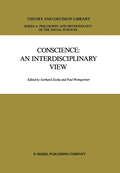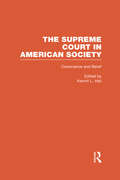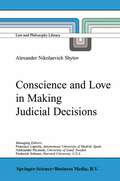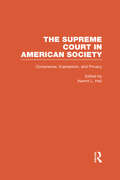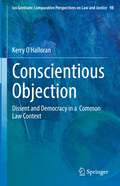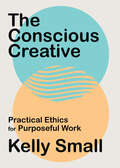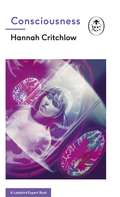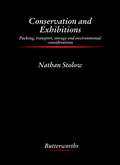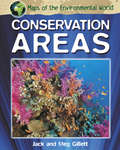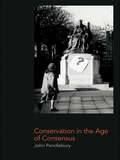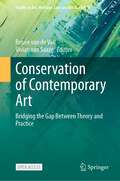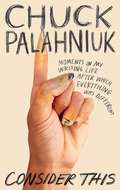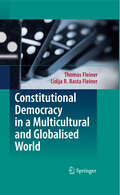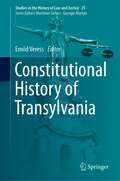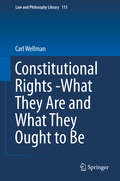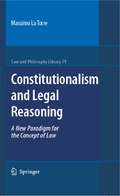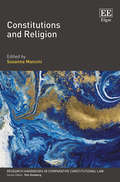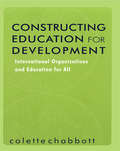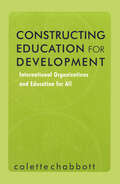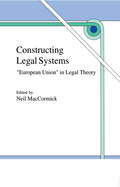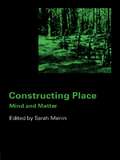- Table View
- List View
Connecting to the Living History of Radiation Exposure
This book highlights the multiple ways of telling stories of radiation exposure; they include stories about Japan, Australia, the United States, the Canadian Arctic, and more, and they probe the framing of major incidents such as Three Mile Island, Chernobyl, and Fukushima. All the chapters in this book are written by authors who participated in our work at Oregon State University and have benefited from hearing not only from scientists but also from those whose lives were directly affected by the history of radiation exposure. The question ‘What is at stake when researching and narrating the histories of radiation exposure?’ is discussed, but the book does not reinforce existing frameworks, such as legal decisions or government policies, but rather highlights what narrative framings accomplish and commit by scrutinizing them with rigorous research, varied approaches, and, above all, listening to those whose lives were most affected by exposure.Previously published in Journal of the History of Biology Volume 54, issue 1, April 2021
Conscience: Salzburg Colloquium on Ethics in the Sciences and Humanities (Theory and Decision Library A: #1)
by G. Zecha P. WeingartnerValue change and uncertainty about the validity of traditional moral convictions are frequently observed when scientific re search confronts us with new moral problems or challenges the moral responsibility of the scientist. Which ethics is to be relied on? Which principles are the most reasonable, the most humane ones? For want of an appropriate answer, moral authorities of ten point to conscience, the individual conscience, which seems to be man's unique, directly accessible and final source of moral contention. But what is meant by 'conscience'? There is hardly a notion as widely used and at the same time as controversial as that of conscience. In the history of ethics we can distinguish several trends in the interpretation of the concept and function of conscience. The Greeks used the word O"uvEt81lm~ to denote a kind of 'accompa nying knowledge' that mostly referred to negatively experienced behavior. In Latin, the expression conscientia meant a knowing together pointing beyond the individual consciousness to the common knowledge of other people. In the Bible, especially in the New Testament, O"uvEt81l0"t~ is used for the guiding con sciousness of the morality of one's own action.
Conscience and Belief: The Supreme Court in American Society
by Kermit L. HallAvailable as a single volume or as part of the 10 volume set Supreme Court in American Society
Conscience and Belief: The Supreme Court in American Society (The\supreme Court In American Society Ser. #Vol. 8)
by Kermit L. HallAvailable as a single volume or as part of the 10 volume set Supreme Court in American Society
Conscience and Love in Making Judicial Decisions (Law and Philosophy Library #54)
by Alexander Nikolaevich ShytovTHE CONSCIENCE OF JUDGES AND APPLICA nON OF LEGAL RULES The book is devoted to the problem of the influence of moral judgements on the result of judicial decision-making in the process of application of the established (positive) law. It is the conscience of judges that takes the central place in the research. Conscience is understood in the meaning developed in the theory of Thomas Aquinas as the complex capacity of the human being to make moral judgements which represent acts of reason on the question of what is right or wrong in a particular situation. The reason why we need a theory of conscience in making judicial decisions lies in the nature of the positive law itself. On the one hand, there is an intrinsic conflict between the law as the body of rigid rules and the law as an living experience of those who are involved in social relationships. This conflict particularly finds its expression in the collision of strict justice and equity. The idea of equity does not reject the importance of rules in legal life. What is rejected is an idolatrous attitude to the rules when the uniqueness of a human being, his well being and happiness are disregarded and sacrificed in order to fulfil the observance of the rules. The rules themselves are neither good or bad. What makes them good or bad is their application.
Conscience, Expression, and Privacy: The Supreme Court in American Society
by Kermit L. HallAvailable as a single volume or as part of the 10 volume set Supreme Court in American Society
Conscience, Expression, and Privacy: The Supreme Court in American Society (The\supreme Court In American Society Ser. #Vol. 9)
by Kermit L. HallAvailable as a single volume or as part of the 10 volume set Supreme Court in American Society
Conscientious Objection: Dissent and Democracy in a Common Law Context (Ius Gentium: Comparative Perspectives on Law and Justice #98)
by Kerry O'HalloranThis book traces, assesses and compares the history of conscientious objection – in the cultural context of six common law nations – from refusal of military service and a range of similar moral dilemmas, to objecting to abortion, to the current social polarisation surrounding vaccination hesitancy in the COVID-19 pandemic. It considers the impact of this form of dissent in relation to social movements like Black Lives Matter, social activists such as Gandhi, and whistle blowers like Daniel Ellsberg. It reflects on the relationships between the sacred and the secular, the state and the citizen, in order to better understand the responsibilities of citizenship in our increasingly secular societies. It analyses what defines the conscientiousness of an objection from both legal and ethical standpoints. It examines what constitutes a matter of conscience, why this should justify exemption from civic duties and why this form of dissent has such a time-honoured status. It explores the increased reliance on “grounds of religion, belief or conscience” as providing justification for excusing some citizens from complying with certain responsibilities – mandated by equality and non-discrimination legislation – that are binding for all others. By conducting a comparative evaluation of national law and judicial rulings on a fixed agenda of issues, this book identifies key jurisdictional differences concerning conscientious objection. In so doing, it highlights the importance of cultural context and constructs a jurisdiction-specific overview of legislation, policies and case law. By tracking policy developments and highlighting crucial judicial rulings – particularly in the US – it provides insights into the probable future direction of developments in national law relating to conscientious objection. Lastly, the book draws attention to some of the potential consequences of manifesting dissent by opting out of performing public services – e.g. the possible local breakdown of specific service availability (e.g. abortion, officiating at same-sex marriages, and immunisation); prompting population movements as established democratic civil rights are locally negated (reproductive rights, LGBT rights, right to health protection); fragmenting society into a geographic patchwork of regions in which some citizens are branded as conservative/reactionary and others as progressive; and fuelling the culture wars – with profound implications for a coherent democratic society.
The Conscious Creative: Practical Ethics for Purposeful Work
by Kelly SmallAn actionable guide to mindfulness and practical ethics for any creative professional who wants to make a living without selling their soul.It can be difficult to live according to our values in a complicated world. At a time when capitalism seems most unforgiving but the need for paying work remains high, it is important to learn how we can be more mindful and intentional about our impact — personal, social, economic, and environmental.As designer and creative director Kelly Small had to do to navigate a crisis of ethics and burnout in their career in advertising, we can admit our complicity in problematic systems and take on the responsibility of letting our own conscience guide our decisions.Start with one or many of these 100+ rigorously researched, ultra-practical action steps:Co-create and collaborateGet obsessed with accessibilityDemand diverse teamsCommit to self-careMake ethics a competitive edgeBe mindful of privilegeCreate for empowerment, not exploitationWith a humorous and irreverent tone, Small reveals how when we release unnecessary judgement and become action-oriented, we can clarify the complicated business of achieving an ethical practice in the creative industries. Discover the power of incremental, positive changes in our daily work-lives and the fulfillment of purposeful work.
Consciousness: A Ladybird Expert Book (The Ladybird Expert Series)
by Hannah CritchlowPart of the ALL-NEW LADYBIRD EXPERT SERIES.____________Are other animals, or even plants, conscious?Can we create conscious robots?Are we able to assume the consciousness of someone else?We all experience the world differently.REALITY is shaped by our individual memories.So we respond to THE WORLD in our own ways.Our UNIQUE EXPERIENCE underpins what it means to be CONSCIOUS.This raises so many questions such as where does consciousness live? And what is it for?Discover the answers and more inside Hannah Critchlow's Ladybird Expert - Consciousness, the thrilling and accessible account that explains what it means to be conscious - from what defines it, to questioning the existence of free will.
Conservation and Exhibitions
by VASTAConservation and Exhibitions: Packing, Transport, Storage, and Environmental Considerations presents the theory and practice in exhibitions conservation. The book aims to promote better conservation practices and less wear and tear of works of art. Topics discussed in the book include conservation principles, examining and reporting a work of art's structural stability, preparation and handling, and storage. Traditional and newer packing techniques, case and container design and construction, transportation modes, strategies and equipment, and loan agreements and insurance are also covered in detail.Conservator practitioners, exhibition organizers, technicians, and transportation specialists will find the book very useful.
Conservation Areas: Conservation Areas Library Ebook (Maps of the Environmental World #4)
by Meg Gillett Jack GillettEach title in the series addresses an environmental topic and illustrated its aspects with the help of maps. An introductory spread presents the topic and explains key ideas, concepts and vocabulary. Twelve spreads each introduce an area of the world, including a map locating relevant sites, graphs offering comparative data and photography.A spread at the back of the book provides further study and comparison exercises.
Conservation in the Age of Consensus
by John PendleburyThis new text on the subject of conservation in the built environment provides a unique holistic view on the understanding of the practice of conservation connecting it with wider societal and political forces. UK practice is used as a means, along with international examples, for bringing together a real understanding of practice with a social science analysis of the issues. The author introduces ideas about the meanings and values attached to historic environments and how that translates into public policies of conservation.
Conservation in the Age of Consensus
by John PendleburyThis new text on the subject of conservation in the built environment provides a unique holistic view on the understanding of the practice of conservation connecting it with wider societal and political forces. UK practice is used as a means, along with international examples, for bringing together a real understanding of practice with a social science analysis of the issues. The author introduces ideas about the meanings and values attached to historic environments and how that translates into public policies of conservation.
Conservation of Contemporary Art: Bridging the Gap Between Theory and Practice (Studies in Art, Heritage, Law and the Market #9)
by Renée van de Vall Vivian Van SaazeThis open access book investigates whether and how theoretical findings and insights in contemporary art conservation can be translated into the daily work practices of conservators or, vice versa, whether and how the problems and dilemmas encountered in conservation practice can inform broader research questions and projects. For several decades now, the conservation of contemporary art has been a dynamic field of research and reflection. Because of contemporary art’s variable constitution, its care and management calls for a fundamental rethinking of the overall research landscape of museums, heritage institutions, private-sector organizations and universities. At first, this research was primarily pursued by conservation professionals working in or with museums and other heritage organizations, but increasingly academic researchers and universities became involved, for instance through collaborative projects. This book is the result of such collaboration. It sets out to bridge the “gap” between theory and practice by investigating conservation practices as a form of reflection and reflection as a form of practice.
Consider This: Moments in My Writing Life after Which Everything Was Different
by Chuck PalahniukRenowned, bestselling novelist Chuck Palahniuk takes us behind the scenes of the writing life, with postcards from decades on the road and incredible examination of the power of fiction and the art of storytelling.In this spellbinding blend of memoir and insight, bestselling author Chuck Palahniuk shares stories and generous advice on what makes writing powerful and what makes for powerful writing.With advice grounded in years of careful study and a keenly observed life, Palahniuk combines practical advice and concrete examples from beloved classics, his own books, and a "kitchen-table MFA" culled from an evolving circle of beloved authors and artists, with anecdotes, postcards from the road, and much more.Clear-eyed, sensitive, illuminating, and knowledgeable, Consider This is Palahniuk's love letter to stories and storytellers, booksellers and books themselves. Consider it a classic in the making.
Constitutional Democracy in a Multicultural and Globalised World
by Thomas Fleiner Lidija Basta FleinerAfter World War II, states transformed into ‘collective fortresses’ in order to protect competing ideological systems. The debate on post-modern statehood heavily built on ideological disputes between liberalism and communism, over the nature of the economic and social system, and the state and government that could sustain such a system. What is an ‘ideologically acceptable’ state-concept; which tasks and fu- tions should the state fulfil, and how to legitimate not only democratic, but also authoritarian and even totalitarian regimes? These questions were at the very centre of state theory. However, after the fall of communism in Europe and the former Soviet Union, the discourse of state and government scholarship radically changed. The need for a profound shift in the state paradigm was emerging. The time after 1989 seemed to proclaim that the nation-state had lost its raison d’être as an island of undisputed and unlimited sovereignty. A globalised world order broke open the ‘fortress state’ that developed within the tradition of European constitutionalism. Given the simultaneous structural changes to the nation-state’s foundations, socio-economic and political reforms going hand in hand with new constitutional designs, the ‘state in transition’ started paving the way towards a new state paradigm, and not only with regard to the states in the process of de- cratic transformation from socialist into liberal constitutional democracies.
Constitutional History of Transylvania (Studies in the History of Law and Justice #25)
by Emőd VeressThis book examines the constitutional history of Transylvania, a region of Central Europe that has experienced a compelling series of historical events and been governed by a variety of ancient, medieval, and modern entities, as well as its own peoples, who from time to time have jointly or separately exercised their right to self-governance. The book’s main goal is to provide, for the first time in English, a comprehensive source for those interested in the variety of states, constitutional and public legal orders which have succeeded one another during Transylvania’s tumultuous history. It serves to underline the region’s uniqueness as a space where (for better or worse) several nationalities, multiple religions and varied cultures have had to find a way to get along, under the pressures of external state and constitutional orders. It seeks to show both the positive and the negative solutions found, which advanced or hindered this goal of organised coexistence.
Constitutional Rights -What They Are and What They Ought to Be (Law and Philosophy Library #115)
by Carl WellmanThis work explains the nature of constitutional rights. It does so by means of an analysis of the nature of law in general, the nature of constitutions, and the nature of rights. It looks in detail at several aspects of constitutional law, rights and institutions, as well as aspects related to public officials, private persons and associations. In addition, the book critically examines a considerable number of debates about whether some actual or proposed constitutional rights ought to be established and maintained in the United States constitution. It then identifies the kinds of reasons that justify or fail to justify constitutional rights. The book advances the debate and makes a contribution to the theory and the practice of constitutional rights.
Constitutionalism and Legal Reasoning (Law and Philosophy Library #79)
by Massimo La TorreThis book of legal philosophy contends that positive law is better understood if it is not too easily equated with power, force, or command. Law is more a matter of discourse and deliberation than of sheer decision or of power relations. Here is thought-provoking reading for lawyers, advocates, scholars of jurisprudence, students of law, philosophy and political science, and general readers concerned with the future of the constitutional state.
Constitutions and Religion (Research Handbooks in Comparative Constitutional Law series)
Constitutions and Religion is the first major reference work in the emerging field of comparative constitutional law and religion. It offers a nuanced array of perspectives on various models for the treatment of religion in domestic and supranational legal orders. Arranged into five main sections, the Research Handbook addresses a range of topics through the lens of comparative constitutional law, including history, concepts and theories; models of managing religion; the politics of religion; supranational constitutionalism and challenges and controversies. The contributors take an interdisciplinary approach to survey historical, legal, political and philosophical views of the contemporary multifaceted treatment of religion within the constitutional order. Chapters explore in depth the interplay between domestic, European and international law, the interaction of the traditions of the major religions with the constitutional ordering of religion and the state, as well as the key challenges brought about by the repoliticizisation of religion. This innovative Research Handbook will be a definitive resource for academics and students interested in religious studies, international and European Union law, international relations, comparative constitutionalism, history, legal and political theory, and sociology.
Constructing Education for Development: International Organizations and Education for All (Reference Books in International Education)
by Colette ChabbottFirst published in 2003. Routledge is an imprint of Taylor & Francis, an informa company.
Constructing Education for Development: International Organizations and Education for All (Reference Books in International Education)
by Colette ChabbottFirst published in 2003. Routledge is an imprint of Taylor & Francis, an informa company.
Constructing Legal Systems: "European Union" in Legal Theory
by Neil MacCormickLegal theory has been much occupied with understanding legal systems and analysing the concept of legal system. This has usually been done on the tacit or explicit assumption that legal systems and states are co-terminous. But since the Rome Treaty there has grown up in Europe a `new legal order', neither national law nor international law, and under its sway older conceptions of state sovereignty have been rendered obsolete. At the same time, it has been doubted whether the `European Union' that has grown out of the original `European Communities' has a satisfactory constitution or any constitution at all. What kind of legal and political entity is this `Union' and how does it relate juridically and politically to its member states? Further, the activity of construing or constructing `legal system' and legal knowledge becomes visibly problematic in this context. These essays wrestle with the above problems.
Constructing Place: Mind and the Matter of Place-Making
by Sarah MeninThis book is a cutting edge study examining the attitudes to both nature and the built environment of the designer, the client and the society in which an intervention (be it architecture, landscape design or a piece of art) is made. The legacy of the Modernist view of nature and the environment is also addressed, and the degree to which such ideas continue to impinge on contemporary interventions is assessed.

